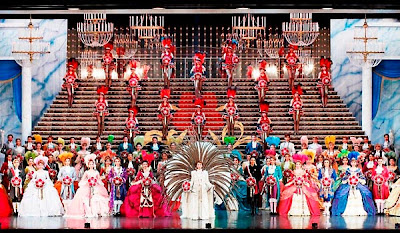Hapkido
 |
| With the power of Hapkido, you too can take down two bad guys at once! (photo credit) |
I've been practicing martial arts since I was about 14 years old and over the course of those years I've tried many different styles. I'm kind of a Jack of all trades, master of none when it comes to martial arts, since I've moved around so much that I've never been able to stay at one school long enough to reach black belt. But it's been a lot of fun to try out different styles and learn something from each of them.
Last winter I heard about a school in Pohang offering evening Hapkido classes for foreigners. I was really excited about the chance to get back into practicing a martial art again (I had about a 6 month break since I left my Kung Fu school in Santiago.) I was also excited about getting to practice with a teacher that knew a little English and some other foreigners. In the end, it turned out I was the only one willing to travel a little ways out of town to get to the school (it's out by Pohang's KTX station) so in the end I was practicing with one other American guy and a group of about 10-15 Korean middle and high school kids.
The teacher was really funny and talented though, so I enjoyed the classes and started coming as often as I could.
Hapkido is a really well-rounded martial art with a very interesting and controversial history. In Hangul it's written 합기도 and in Hanja (Korean used Chinese characters) it's 合氣道. If you're familiar with either Chinese characters or the Japanese martial art Aikido, you might notice that the characters used are basically the same (although in Korean Hanja they use an older version for the character "ki".) This is because Hapkido most likely originated from the Japanese martial art of Daitō-ryū Aiki-jūjutsu, a predecessor of modern day Aikido.
Part of the controversy behind the history of Hapkido revolves around its origins. The founder of Hapkido was a Korean man named Choi Yong-Sul (최용술) who lived in Japan for 30 years leading up to WWII. Presumably he learned Daitou-ryuu Aiki-juujutsu there, but how exactly he learned it is apparently still up for debate and tied up in the historical animosity between Koreans and Japanese.
 |
| Founder of Hapkido and master of the poker face, Choi Yong-Sul (photo credit) |
At any rate, following the war Choi returned to Korea and began to teach martial arts using the name "Hapkido". Hapkido is similar to Aikido in the sense that it uses a wide variety of techniques and strives to be well-rounded. The meaning of the characters in Hapkido/Aikido is "combined", "spirit" and "way", so it can be translated as "the way of coordinating energy", "the way of coordinated power" or "the way of harmony" (source: Wikipedia.)
Practitioners of Hapkido use a variety of techniques such as kicks, strikes, blocks, joint locks, throws, grappling and a variety of weapons like staff, nun-chaku, knife, sword, rope, and so on. Basically, these guys want to be ready for anything. Many of the techniques probably originate from Daitou-ryuu Aiki-juujutsu, but many things from native Korean martial arts, especially kicks, have also been added.
 |
| Hapkido armbar takedown and S-lock (photo credit) |
Since my background in martial arts is pretty eclectic, I had a lot of fun with Hapkido. Best of all, my teacher had trained in other things, too, so he was totally open to incorporating other styles and techniques into the Hapkido he was teaching me. I loved the variety and the pragmatic element of it.
 |
| Me and my teacher practicing a little set he made up |
I had to leave my school when I left Korea, but if I get a chance to practice Hapkido again when I return I would really love to do so. If you're looking for a good work out and a martial art that can teach you a little bit of everything, Hapkido is a great option.
If you live in Pohang and you'd like to try a class at this school, just leave me a message in the comments.


Comments
Post a Comment